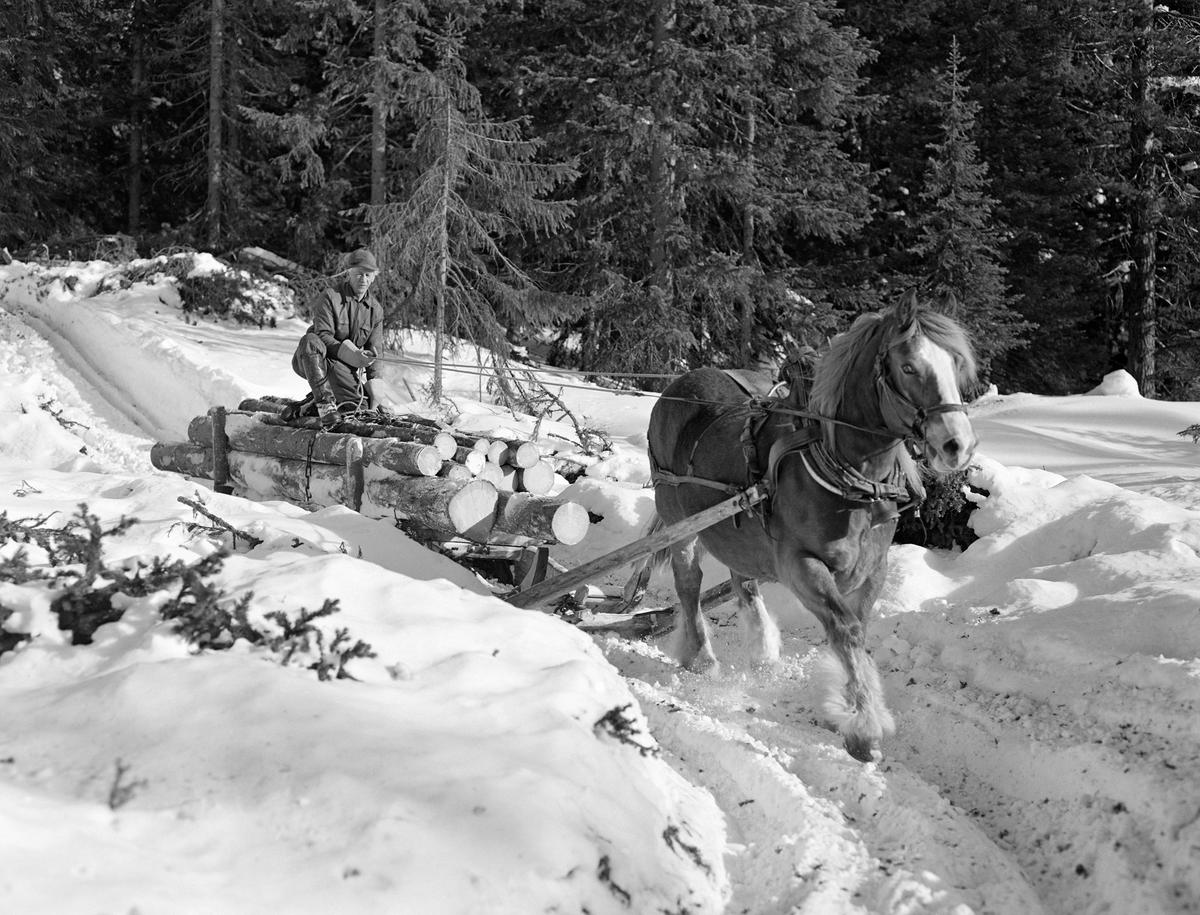- 1/1
Kåre Østerhaug transports timber using horse and «nest» in 1977. OT Ljøstad/Norsk Skogmuseum
The use of charcoal for the smelting at Røros Copper plant seized around 1900, and in Engerdal the Government attained the vast forest areas inside the Circumference*. As a result, 88 per cent of all land belonged to the Government. Since then the forest has been used for timber. The jobs were no longer connected to the production and transportation of charcoal, but to the timber industry. The Government’s forests became the most important workplace to the male population in Engerdal, until as late as the 1990s. Forestry is therefore dedicated a lot of space at Blokkodden Wilderness Museum.
Forest dwellings were used for accommodation, often for several weeks at a time, if it was far from home. In the beginning, building a cabin and, if necessary, a stable to the horse, was more or less a part of the employment. Not much work was put into the making of these log cabins; often they were only used for a few weeks. Decades would pass until the next timber operation. During the interwar period, people started to engage in the lumberjacks’ living conditions. In 1936 the Parliament passed a law set to improve these conditions, but the law was not implemented before in 1941.
*A circumference is a fixed area surrounding the mines, from the mid-1600s. This involved that everybody who owned forest inside the circumference were obliged to deliver timber and other goods to the mines that were owned by the holders of the privilege, in this case the Røros Copper plant.
